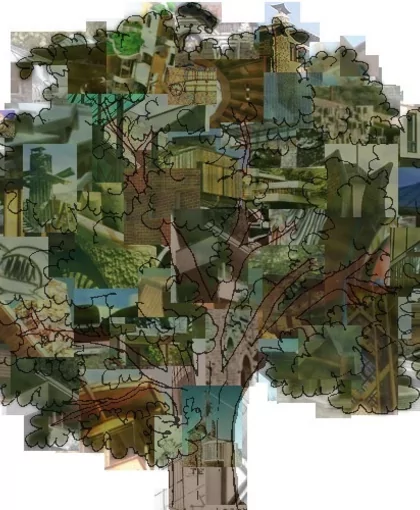Résumé
Et si l’architecture pouvait être vécue comme élément d’intercession orienté entre l’homme et son environnement ? Cette idée a été soutenue par un mouvement architectural cohérent, l’architecture organique, formant une tradition constructive alternative traversant tout le XXe siècle et repérable dans le monde entier. En considérant qu’une pratique architecturale adaptée favorise une relation apaisée entre l’homme et son environnement bâti ainsi qu’une reconnexion entre l’homme et son environnement naturel, l’organicisme peut véritablement être considéré comme une architecture environnementale. Cependant, en dépit de ce que nous pensions à l’origine, cette tradition architecturale ne se définit que difficilement par sa forme. Il faut plutôt en passer par la théorie architecturale pour voir émerger une vision commune à un ensemble de théoriciens ou d’architectes. Cette manière de pratiquer ou d’envisager l’architecture est lisible dans les idées de Kenneth Frampton ou de Christian Norberg-Schulz, dans les positionnements sur la question centrale de la fonction en architecture ou à travers la théorie de la pure visibilité et son corollaire, la connaissance corporelle. Bruno Zevi, entre autres, apporte également sa pierre à l’édifice théorique mais c’est Frank L. Wright qui est le grand bâtisseur de l’architecture organique au sens propre comme au figuré. Il n’en est cependant pas le seul pratiquant et les carrières d’autres architectes majeurs comme Eladio Dieste, Hassan Fathy, Gaudí, les époux Griffin, Hundertwasser, Alistair Samuel Knox, Rudolf Steiner ou Gustav Stickley notamment, peuvent être examinés avec intérêt sous l’angle de l’architecture environnementale.
Summary
From organic architecture to environmental architecture, itinerary in the other building tradition of the twentieth century
What if architecture could be lived as an oriented element of intercession between human and his environment ? This idea was supported by a coherent architectural movement, organic architecture, forming an alternative building tradition through the entire 20th century and noticeable throughout the world. Considering that an appropriate architectural practice promote a peaceful relationship between man and his built environment and a reconnection between man and his natural environment, organicism can truly be considered as an environmental architecture. However, in spite of what we thought originally, this architectural tradition is not easy to define by its formal aspect. Rather, it is necessary to go through architectural theory to see the emergence of a common vision to a group of theorists and architects. This way of practising or considering architecture can appears in the ideas of Kenneth Frampton or Christian Norberg-Schulz, in the opinion on the key question of function in architecture, or through the theory of pure visibility and its corollary, physical knowledge. Bruno Zevi, among others, also contributes to the theoretical edifice but it is Frank L. Wright who is the great builder of organic architecture both literally and figuratively. However, he is not the only proponent of this type of architecture and the careers of other major architects such as Eladio Dieste, Hassan Fathy, Antoni Gaudí, the Griffin’s, Friedensreich Hundertwasser, Alistair Samuel Knox, Rudolf Steiner or Gustav Stickley, especially, can be analyzed with interest from the perspective of environmental architecture.
Jury
- Barthélémy Jobert, Professeur, Université Paris-Sorbonne
- Jean-Baptiste Minnaert, Professeur, Université Paris-Sorbonne
- Jean Nayrolles, Professeur, Université Jean Jaurès, Toulouse
- Simon Texier, Professeur, Université Picardie Jules-Verne

